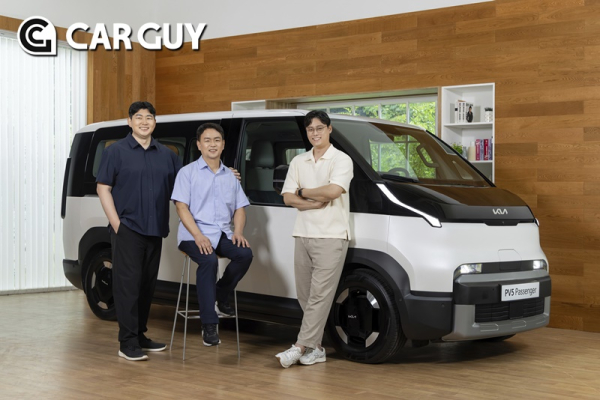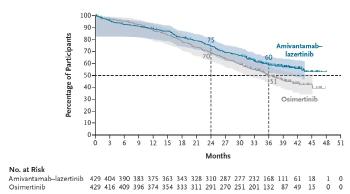Kia PV5 Tech Day, the all-time commercial car..Box-shaped space is attractive
Jul 23, 2025
|
#Scene 2 = Oh~The rear wheel suspension is a torsion beam! If you buy this as a family minivan, it wobbles every time you go over the bump, so the family will have a lot of resentment..Consequently, the PV5 fits the concept of an electric commercial vehicle rather than a minivan, which seems like an inevitable choice as the multilink on the rear wheels reduces load space..It weighs only 750kg, so it's perfect for high-end cargo transportation such as pharmaceuticals
#Scene3= As expected, ChatGPT can't even be used on PV5! I had high expectations because it was the first vehicle to apply Android Auto-based AAOS instead of the inconvenient ccNC infotainment OSIn the end, it is still difficult for consumers to reverse the Linux base, which is very inconvenient
Kia has revealed the customer-centered development process and core technologies of the electric mobility PV5.On the 22nd, 'The Kia PV5 Tech Day' was held at Ibex Studio in Gwangmyeong, Gyeonggi-do, and introduced PV5's differentiated marketability and real-user-oriented technological innovation cases.Kia's EV3,4,5,6,9 is a new multi-purpose concept than other passenger electric vehicles with the same size, so it is a vehicle with high expectations not only for commercial vehicles but also for general consumers' minivans.
Moreover, expectations were higher after switching from the existing ccNC to AAOS with the new infotainment OS. However, from the perspective of consumers, there are not enough apps to download and use, and web browsers are still undecided, so it seemed that there was a long way to go to download web apps such as ChatGPT to use in-vehicle infotainment systems.
PV5 is Kia's first Platform Beyond Vehicle (PBV) dedicated to electricity, and it has the practicality of expanding hardware and software flexibly for various purposes from comfortable family cars to camper cars and business vehicles.
In particular, Kia defined the essence of PV5 as 'customized mobility that perfectly responds to the customer's various uses' and directly participated actual customers in the vehicle development process with thorough market research.
PV5, which opened the beginning of future mobility, implemented innovation that encompasses space maximization, scalability, and connectivity through active communication with customers from the beginning of its development, which is an achievement of close collaboration with the capabilities of all Kia sectors. We will continue to increase the marketability and completeness of the PV5 based on the voices of customers.
Kia applied the 'PBV-only new product development process' to PV5 for the first time to actively reflect customers' voices from the early stages of vehicle development.The PBV-only new product development process is a system for flexible development of various vehicles according to market needs. The key is to establish a wide range of user scenarios based on market research and customer interviews, and to strengthen verification based on actual use by directly participating major target consumers and domestic and foreign corporate customers from the beginning of development.
In particular, Kia established more than 1,000 user scenarios, carefully reviewed related laws and statistics, and participated in public institutions and local government officials to verify them in three dimensions.
In the early days of PV5 development, Kia displayed PBV Test Buck (a usability verification model) at 'Hyundai Motor Group UX Studio Seoul' and invited various customers to carefully check user experience concepts and responses to scenarios.
In addition, in the process of developing mobile vehicles for the weak, wheelchair users and disabled taxi operators were given the opportunity to experience the vehicle being developed firsthand, and improvement opinions derived from their actual use experiences were actively heard.
Based on this, Kia has achieved the most ideal design within the limited specifications by setting the optimal vehicle specifications and ▲ a low two-row stepper that anyone can easily get on and off the car ▲ Up to 181cm indoor height (based on high roof) ▲ Kia Ad Gear, which helps to easily mount various items, and L-Track Package ▲ A 5.5m radius of rotation that makes it easy to drive on narrow roads and park on long wheel bases.
In addition, Kia regularly held 'PBV Partners Day', a customer participation event for domestic and foreign corporate customers and specialty companies, and unveiled PV5 being developed twice in 2022 and 2023 to collect various opinions and suggestions on overall marketability, design, and software solutions.
More than 100 customers from around the world, including Korea, Europe, North America, Sub-Middle East, and Japan, participated in the event to explore the development direction of PV5 from their respective business perspectives such as mobility, logistics, delivery, and utilities, and through this collaboration, Kia specified the development plan of PV5 and laid the foundation for sustainable cooperation.
Kia systematically reflected customer requirements focusing on three development strategies: ▲ PBV specialized development ▲ minimizing total cost of ownership (TCO) ▲ establishing a PBV ecosystem by closely analyzing the actual driving environment and the purpose of using the vehicle.
Kia diversifies the seating arrangement of PV5 passengers to ▲2-3-0 ▲1-2-2 ▲ 2-2-3, and Cargo operates in three models: ▲ Compact ▲ Long ▲ High Roof, and supports customers' daily lives and businesses such as movement, transportation, and leisure through the application of diverse convenience specifications and durable materials.
In addition, to minimize the total cost of ownership incurred in the previous stage from vehicle purchase to operation, parts sharing rate was maximized and motor and battery systems were optimized for use to increase price competitiveness.
In addition, hidden LED headlamps and three-division bumpers are applied to minimize damage to parts in case of minor collisions, and durability performance of body and PE systems is strengthened compared to existing passenger cars to contribute to reducing maintenance costs.
In order to lay the foundation for the PBV ecosystem that can be expanded in both hardware and software, Kia applies an AAOS-based PBV-only infotainment system to provide various functions and services such as ▲ third-party app support through the Pleos App Market ▲ conversion vehicle control, and uses open-source-based platforms such as ▲ Kia Adgear and ▲ Loop Rack Mount Hall ▲ L-Track to conveniently implement customized vehicles according to their use.
In addition, Kia plans to develop and produce conversion models professionally and efficiently through the 'PBV Conversion Center' and build a PBV ecosystem by creating a structure that can coexist with external partners through the 'Conversion Portal System'.
In addition to this, PV5 has a long wheel base of 2,995mm, which is advantageous for securing indoor space to meet customer needs, while implementing a 5.5m rotation radius to improve convenience when driving in narrow alleys or parking. It also applied the latest safety and convenience specifications such as ▲2nd generation pedal malfunction safety assistance (PMSA) ▲ Work away lock ▲ Pet mode.
The PBV-only electrification platform 'E-GMP.S', which was first applied to PV5, was developed based on the next-generation development system 'Integrated Modular Architecture (IMA)', aiming to realize maximized indoor space and optimized performance in consideration of the usage environment of potential PBV customers.
IMA is characterized by simultaneously securing development efficiency and product competitiveness by standardizing key components and systems on a module-by-module basis, and E-GMP.S is designed to flexibly combine various life modules according to their use on top of a public drive module consisting of a standardized underbody, drive system, and suspension.
In order to maximize the indoor space of PV5, Kia optimally deploys components inside the PE room to minimize volume and move the driver's seat forward compared to the existing MPV, while maximizing the impact energy distribution effect by applying the forward multi-frame structure.
In addition, to protect the battery from physical impact, the battery protection structure was applied with front-wheel subframes, a high battery ride height of 180mm was secured, and sufficient free space was formed between the battery and the side body.
In addition, ultra-high tension steel, such as 170K and 150K hot stamping and 150K roll forming, is applied to major areas to strengthen body rigidity, thereby minimizing passenger space deformation in case of a collision and further enhancing battery protection performance. For suspensions, front-wheel double-wishbone and rear-wheel coupled tion beam axles (CTBA) were applied to implement large indoor spaces and low-image floors.
The front-wheel double-wishbone simplified the assembly process by applying the insulator integrated module bracket structure to improve maintenance convenience, and the rear-wheel CTBA applied new parts such as ▲ dual bump stopper ▲ nonlinear (floating pitch) spring ▲ detachable CTBA bushing to secure both durability and driving performance.
Dual bump stoppers increase driving performance and durability when passing through bumps or irregularities, respectively, and nonlinear springs prevent rear wheel garage sagging when multiple passengers are on board or loading loads.
Separate CTBA bushing is characterized by separating rubber with one characteristic for ride comfort and durability to realize a quiet ride as well as durability, and is applied as a specifications for passengers in the rear seat to increase the satisfaction of passengers.
In addition, PV5 will be equipped with a standard drive motor system integrated with a motor, inverter, and reducer with a maximum torque of 250 Nm (25.5kgf·m) optimized for the customer's use environment, and will be provided with three types of battery systems: NCM 71.2kWh, 51.5kWh, and LFP 43.3kWh with Cell to Pack (CTP) technology based on two standard battery cases. ※ LFP batteries are operated exclusively for overseas markets)
Kia first introduced a 'flexible body system' in PV5 that applied a new design and production concept called 'a body that assembles like a Lego block'.The flexible body system is a PBV-specific technology that flexibly develops and produces various specifications by modularizing moving parts such as the body, doors and tailgates, and major parts of exterior and interior.It is characterized by securing structural stability and convenience of maintenance at the same time.
PV5 has a system that can flexibly combine up to 16 types of bodies by applying the front and first row structure to all models, and the structure after the first row consists of rear overhang, tailgate, and quarter glass as modules.
Kia plans to first introduce a total of seven basic bodies, including the ▲ Passenger (long) ▲ Cargo Long (3 doors/4 doors), and the ▲ Cargo Compact (3 doors/4 doors) ▲ Cargo High Roof (3 doors/4 doors), which began its contract last month.
Among them, Cargo Long is manufactured by moving the Cargo Compact's "Rear Overhang Module" to the back and adding a "Long Body Module" to increase the battlefield, and it can be converted to a passengers body only by replacing the "Quarter Glass Module" and the "Tail Gate Module," boasting high compatibility and flexibility.
Kia applied 'assembled rear around garnish' and 'exoskeleton annular structure' to PV5 in consideration of its expandability, safety, and ease of maintenance.
The rear side garnish applied to the outside of the body after the D pillar can be implemented in various sizes, shapes, and differentiated designs depending on the vehicle's battlefield, electricity, and use. It consists of three pieces, making it easy to replace only the damaged area in case of collision or scratch, contributing to maintenance efficiency and cost reduction.
In addition, Kia improved the structural stability and NVH performance of the body by implementing an 'exoskeleton annular structure' that thickly extends the body frame to the outside based on the prefabricated garnish structure, and the long body model further strengthened the body rigidity by designing the 'exoskeleton dual annular structure' that is double applied to the rear overhang extension (long body module) and the rear side (rear overhang module).
In addition, on the outside of the body in front of the D pillar, steel panels classified by the presence or absence of second-row sliding doors and quarter glass were produced in only two molds, which can be applied to various bodies, maximizing development and production efficiency.
The PV5 is 4,495mm (compact) and 4,695mm (long, high-loop), which is a typical subcompact size, but provides interior and loading space at a large vehicle level through ▲2,995mm long wheelbase ▲ driver's front placement ▲ low-rise floor design.
The PV5 Passenger has secured more than 1,000mm of headroom and legroom in three rows of seats based on the 2-2-3 model, providing a sense of space comparable to that of the second row of a regular car. The second row sliding door is designed with a stepper of 399mm and an opening of 775mm, allowing anyone to get on and off conveniently, including children, the elderly, wheelchair users, and passengers with luggage.
The trunk capacity is 1,330ℓ based on the 2-3-0 model, which extends to up to 3,615ℓ when folded in the second row, and in the case of a mobility service-specific model (1-2-2) that replaces the passenger seat with the loading space, up to three travel carriers can be loaded in the space. ※ The loading capacity may vary depending on the size of the carrier.)
The PV5 cargo is based on a 419mm low rear loader, and the compact and long are 1,520mm and the high roof is 1,815mm, improving convenience when working on top and bottom cars or inside vehicles.
Cargo Long provides a loading capacity of up to 4,420 liters and High Loop provides up to 5,165 liters, and the High Loop has a "walk-through" option with a partition wall sliding door and a passenger pop-up sinking seat, allowing drivers to conveniently move to the cargo room indoors without getting out of the vehicle.
Kia operates a "Luggage Flattening Deck" on the Passinger 2-3-0 model that provides full flat space when folded in two rows to meet various customer needs, and the Cargo model operates a "Cargo Room Flattening Floor" designed to allow bulky cargo or pallet loading.
In addition, PV5 actively reflects customer opinions and provides best-in-class storage space, including ▲ driver crash pad top tray and internal charging C-type USB terminals ▲ floor and door scuff tray ▲ large-capacity door tray ▲ center fascia sliding tray ▲ dedicated one-row seat rear multi-storage space.
Kia develops and produces a conversion model that secures the quality and marketability of finished cars through the 'Kia PBV Conversion Center' and the 'PBV Conversion Development Process' built near the PBV-only plant 'Hwasong EVO Plant', and operates a 'conversion portal system' and a 'donor model' to support the external conversion ecosystem.
Kia newly established the PBV conversion development process to establish the development plan and design direction of various conversion models from the beginning of the development of the PV5 basic model, and checked essential conversion elements in advance and reflected them in the basic model design.
Based on this preemptive design, the basic model's body, such as PV5 fascinator and cargo, is equipped with dedicated mounting structures such as holes, nuts, and brackets, allowing the PBV convergence center to safely and quickly install necessary parts without additional work. The basic design also includes controllers and wiring harnesses for implementing converting-only functions.
In the future, Kia plans to introduce various converting models such as ▲ open bed ▲ 'light camper' ▲ passengers' advanced model 'prime' ▲ built-in tower ▲ freezer tower car through PBV conversion center.It operates a conversion portal system to provide conversion technology guides and vehicle data so that external partners can perform conversion safely and efficiently, and even links technical support from research institutes.
In addition, it operates a 'donor model' to minimize unnecessary waste of time and resources in the conversion process and increase price competitiveness.It is shipped with unnecessary parts such as seats and trims removed in advance, and is equipped with power points, conversion-only controllers, and infotainment system interworking functions to help external partners perform conversion more easily and stably.
Meanwhile, Kia plans to start delivering PV5 passengers 2-3-0 and Cargo Long models to domestic customers next month, and sequentially deploy PV5 in the global market starting with the European launch in the fourth quarter of this year.
Gwangmyeong = Editor Kim Tae-jin tj.kim@carguy.kr
This article was translated by Naver AI translator.














